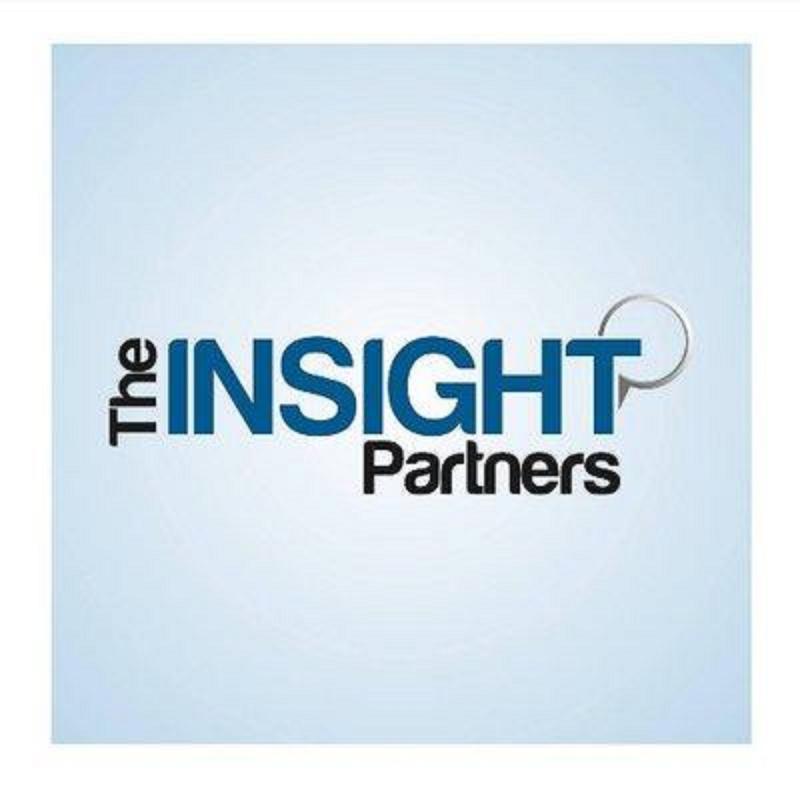Press release
Understanding the Rheumatology Market: Segments & Scope
According to The Insight Partners, the rheumatology market is broadly segmented by:• Drug class: nonsteroidal anti inflammatory drugs (NSAIDs), corticosteroids, uric acid drugs, and disease modifying anti rheumatic drugs (DMARDs).
• Disease indications: rheumatoid arthritis, osteoarthritis, gout, psoriatic arthritis, ankylosing spondylitis.
• Distribution channels: hospital pharmacies, retail pharmacies, online pharmacies.
• Geography: the usual regions (North America, Europe, Asia Pacific, South & Central America, etc.) with further country level breakdowns.
CAGR (Compound Annual Growth Rate) for the rheumatology market is projected at around 6.2% from 2025 2031.
Check valuable insights in the Rheumatology Market report. You can easily get a sample PDF of the report - https://www.theinsightpartners.com/sample/TIPRE00021202/?utm_source=OpenPR&utm_medium=10752
Major Drivers & Trends
Here are the key growth drivers, opportunities, and future trends shaping the market:
Growth Drivers
1. Rising awareness and education
Increased awareness among both patients and healthcare professionals about rheumatic diseases boosts earlier diagnosis and treatment uptake. Patient advocacy, information campaigns, social media all help.
2. Aging population
Rheumatic diseases like osteoarthritis and certain kinds of arthritis are more common in older age groups. As populations age (especially in developed and rapidly developing countries), the incidence and/or diagnosis rates are increasing.
3. Expanded availability of non pharmacological treatments
Alongside drugs, there is increasing use of lifestyle interventions, physical therapy, exercise, dietary measures, assistive devices. These treatments aren't always replacements but complement pharmacologic treatment and are becoming more acceptable and widespread.
4. Healthcare infrastructure, diagnostics, reimbursement improvements
Improvements in diagnostics help with early detection; better healthcare facilities and favorable reimbursement policies enable access to advanced therapies (especially in emerging markets).
5. Strong R&D pipeline & innovation
Particularly in DMARDs, and biologics / biosimilars; new molecules and modalities (e.g. targeted synthetic DMARDs, JAK inhibitors, IL inhibitors).
Future Trends & Opportunities
• Gene and cell based therapies: There's interest in moving beyond symptom management toward approaches that modify disease progression at a molecular or cellular level. Stem cells, gene therapy, etc.
• Biologics and biosimilars: Biologics remain important, but biosimilars are increasingly significant in cost sensitive regions. These help reduce costs and make treatment accessible.
• Personalized medicine / biomarkers: Tailoring therapy based on patient profiles, predicting response, avoiding adverse events.
• Digital health & telemedicine: Tools to monitor disease progression, support adherence, remote consultations. Especially important in regions with limited access.
• Early diagnosis / preventive models: Screening, awareness, early interventions before severe joint damage to improve long term outcomes.
Top Players & Competitive Strategies
The market is quite competitive. Here are the key players and some of their strategies:
Key Players
Some of the major companies operating in this market include:
• AbbVie Inc.
• Pfizer Inc.
• Novartis AG
• Merck & Co., Inc.
• Amgen Inc.
• Bristol Myers Squibb Company
• Sanofi, Janssen (J&J), Genentech
• Takeda Pharmaceutical Company Limited
Strategic Moves
To maintain or grow their market share, companies are using various strategies:
• Product innovation & R&D: Developing novel biologics, targeted synthetic DMARDs, better small molecules, improved safety profiles.
• Biosimilars entry: As patents for biologics expire, companies are introducing biosimilars to capture cost sensitive markets or to compete with established brands.
• Partnerships, collaborations: For example, joint ventures, licensing, co development to share R&D cost, risk and speed up time to market. (While The Insight Partners report doesn't always list each specific deal, this is a common feature.)
• Geographic expansion: Targeting emerging markets (Asia Pacific, Latin America) where prevalence is rising, healthcare access is improving.
• Improving affordability & access: Through pricing strategies, inclusion of treatments in public/private insurance or reimbursement schemes; possibly via generic or biosimilar offerings.
• Enhancing diagnostics and early intervention tools: To capture patients early (before disease progression) and improve outcomes.
Key Segments: What's Growing Fastest?
Some segments are more dynamic than others:
• DMARDs (especially biologic and targeted synthetic ones) tend to see strong growth because of their ability to modify disease progression rather than just relieve symptoms.
• Biologics & biosimilars: As noted, biologics dominate many existing segments; biosimilars are growing more rapidly in cost sensitive regions.
• Oral vs Parenteral administration: Some shift depending on patient preference, safety, convenience. The route of administration is an important sub segment.
• Online pharmacies & retail channels: While hospital pharmacies remain crucial (especially for high cost therapies), retail and online distribution are gaining share, especially for more accessible drugs or in places with better regulatory frameworks for online health.
• Geographic regions: Asia Pacific is frequently cited as among the fastest growing, due to rising income, growing elderly populations, and improving healthcare infrastructure. North America still often leads in revenue due to established markets and high adoption rates.
Challenges & Market Restraints
Growth is not without hurdles. Some of the challenges include:
• High cost of biologics and novel therapies: Which limits access, especially in low and middle income countries. Reimbursement and insurance will be critical.
• Regulatory hurdles and long approval timelines: For innovative treatments, especially gene/cell therapies.
• Safety and side effects: For certain DMARDs / biologics, risk of infections, other adverse effects is nontrivial. This can limit adoption or require careful monitoring.
• Competition & patent expiries: While biosimilars help competition, they also squeeze margins for established biologics.
• Market fragmentation in emerging regions: Infrastructure, cold chain, regulatory harmonization, reimbursement complexity all vary, which can slow uptake.
Growth Strategies: What Can Companies Do
Based on the above, companies (and other stakeholders) should consider the following as part of a growth strategy in rheumatology:
1. Invest heavily in pipeline innovation
Focus on molecules with novel mechanisms, better safety/efficacy, maybe even curative or close to disease modifying rather than only symptom relief.
2. Leverage biosimilars to expand market
Use biosimilar offerings to penetrate price sensitive regions; pair this with strategic pricing or funding/reimbursement deals.
3. Think globally, localize where needed
Entry into emerging markets demands adaptation: lower cost manufacturing, regulatory approvals, partnerships with local players, adjusting product offerings.
4. Embrace digital health tools
Tools for remote monitoring, patient adherence, tele consults, wearables can reduce cost and improve outcomes; they also help collect real world evidence.
5. Focus on early diagnosis & prevention
Strategies and marketing that help physicians detect disease earlier, or public health programs to raise awareness, can reduce disease burden and thereby increase demand for earlier stage treatments.
6. Ensure strong regulatory & reimbursement strategies
Work proactively with regulators to get approvals, ensure safety profile is strong; work with payers to get drugs covered, reimbursement high enough; ensure affordability.
7. Partnerships / alliances
Collaborations across biotech, academia, diagnostics providers; mergers/acquisitions can help fill gaps (e.g. complementing portfolios, acquiring technology, achieving scale).
Outlook & What to Watch For
To wrap up, here are some indicators and developments to keep an eye on:
• Success or approval of new gene or cell based treatments in clinical trials.
• Growth in biosimilar approvals and their uptake in markets where cost has been a barrier.
• Regulatory changes (faster approvals, better reimbursement policies) in emerging economies.
• Adoption of value based care models in rheumatology.
• Advances in biomarker based diagnostics that enable personalized treatment (predicting response, etc.).
• Expansion of non drug interventions and holistic care, including telemedicine etc.
Conclusion
The rheumatology market is poised for steady growth in the coming years, with a CAGR in the 6.2% range (2025 2031). The biggest gains will likely come from DMARDs and biologics/biosimilars, especially in markets that are expanding healthcare access. Companies that can innovate, make treatments affordable, and improve early detection will have an edge.
Get Premium Research Report of Rheumatology Market Size and Growth Report by 2031 at: https://www.theinsightpartners.com/buy/TIPRE00021202/?utm_source=OpenPR&utm_medium=10752
Contact Us
• If you have any queries about this report or if you would like further information, please contact us:
• Contact Person: Ankit Mathur
• E-mail: ankit.mathur@theinsightpartners.com
• Phone: +1-646-491-9876
About The Insight Partners
The Insight Partners is a thought leader in market research, offering expertise in wallpaper market trends, consumer insights, and industry analysis to help you make informed business decisions.
This release was published on openPR.
Permanent link to this press release:
Copy
Please set a link in the press area of your homepage to this press release on openPR. openPR disclaims liability for any content contained in this release.
You can edit or delete your press release Understanding the Rheumatology Market: Segments & Scope here
News-ID: 4227630 • Views: …
More Releases from The Insight Partners

Infused Drugs Market - 2031 Industry Analysis by Regions, Types and Application
The Infused Drugs Market delivers a comprehensive study of the market, including its dynamics, structure, characteristics, Key players, growth and demand drivers, etc. As a Complete Analysis report, it covers all details inside analysis and outlook according to The Insight Partners.
Download Sample PDF @ https://www.theinsightpartners.com/sample/TIPRE00040634?utm_source=OpenPR&utm_medium=10881
Key Players Analysis:
Baxter International
Becton Dickinson and Company
Grifols
Pfizer
Ferring Pharmaceuticals
Amgen Inc.
Eli Lilly and Company
Novartis
Fresenius Kabi
Johnson & Johnson
The report covers key developments in the Infused Drugs Market as organic…

X-Ray Photoelectron Spectroscopy Market Global Rising Demand & Huge Scope Till 2 …
A new market study report by The Insight Partners on the X-Ray Photoelectron Spectroscopy Market has been released with reliable information and accurate forecasts for a better understanding of the current and future market scenarios. The report offers an in-depth analysis of the global market, including qualitative and quantitative insights, historical data, and estimated projections about the market size and share in the forecast period.
Get PDF Sample Report…

Medical Cyclotron Market Global Rising Demand & Huge Scope Till 2028
Medical Cyclotron Market business research report assesses the current as well as upcoming performance of the market, also brand-new trends in the market. It provides product overview and highlights of product and application segments of the market including price, revenue, sales, sales growth rate, and market share by product. The market statistics within the report is displayed in a statistical format to offer a better understanding upon the market dynamics.…

Vital Signs Monitoring Devices Market Global Rising Demand & Huge Scope Till 203 …
Vital Signs Monitoring Devices Market business research report assesses the current as well as upcoming performance of the market, also brand-new trends in the market. It provides product overview and highlights of product and application segments of the market including price, revenue, sales, sales growth rate, and market share by product. The market statistics within the report is displayed in a statistical format to offer a better understanding upon the…
More Releases for DMARDs
Rheumatoid Arthritis Treatment Market Set to Reach US$ 79.1 Billion by 2033 - In …
Overview of the Market
The global rheumatoid arthritis (RA) treatment market is witnessing significant growth driven by rising disease prevalence, advances in therapeutics, and increased awareness of early diagnosis and management. In 2022, the market generated revenue of approximately US$ 42.9 billion and is forecasted to expand at a steady compound annual growth rate (CAGR) of 5.7% over the next decade, reaching an estimated valuation of US$ 79.1 billion by 2033.…
Disease-Modifying Antirheumatic Drug Market Forecasted to Reach 7.5% CAGR by 203 …
The global Disease-Modifying Antirheumatic Drug (DMARD) market is set to surge at a Compound Annual Growth Rate (CAGR) of 7.5% from 2022 to 2030, as stated in the recently published report from Dataintelo. This substantial growth is primarily fueled by the rising incidence of rheumatoid arthritis, the increasing geriatric population worldwide, and burgeoning demand for advanced treatment options.
The non-steroidal anti-inflammatory drugs (NSAIDs) segment is predicted to hold a dominant position…
Rheumatoid Arthritis Drugs Market size is projected to reach $62,935 million by …
According to a new report published by Report Ocean, titled, “Rheumatoid Arthritis Drugs Market by Drug Class, Route of Administration, and Sales Channel: Opportunity Analysis and Industry Forecast, 2020–2027,"" the global rheumatoid arthritis drugs market size was valued at $57,929 million in 2019, and is projected to reach $62,935 million by 2027, registering a CAGR of 2.8% from 2020 to 2027.
GET SAMPLE PAGES @ https://www.reportocean.com/industry-verticals/sample-request?report_id=AMR1312
Rheumatoid arthritis disease is an autoimmune…
Janus Kinase Disease-Modifying Antirheumatic Drugs (DMARDs) Inhibitors Market Si …
Janus Kinase Disease-Modifying Antirheumatic Drugs (DMARDs) Inhibitors Market 2019 Janus kinase inhibitors, also known as JAK inhibitors or jakinibs, are a drug type of medication that functions by inhibiting the activity of one or more of the Janus kinase family of enzymes (JAK1, JAK2, JAK3, TYK2), thereby interfering with the JAK-STAT signaling pathway.
Get Sample Copy of this Report – https://www.orianresearch.com/request-sample/1387696
What You Can Expect From Our Report:
Total Addressable Market [Present…
Rheumatoid Arthritis (RA) Drugs Market Report 2018: Segmentation by Drug Class ( …
Global Rheumatoid Arthritis (RA) Drugs market research report provides company profile for AbbVie, Biogen, Inc., Bristol-Myers Squibb, Celgene Corporation, Celltrion Inc., Johnson & Johnson, MedImmune, LLC, Merck & Co., Inc., Novartis International AG, Takeda Pharmaceutical Company Ltd. and Others.
This market study includes data about consumer perspective, comprehensive analysis, statistics, market share, company performances (Stocks), historical analysis 2012 to 2017, market forecast 2018 to 2025 in terms of volume, revenue,…
Rheumatoid Arthritis Drug Market Rheumatoid Arthritis Clinical Pipeline Report 2 …
For Report Sample Contact: neeraj@kuickresearch.com or +91-11-47067990
Report Table of Contents
Antirheumatoids: Call of Rheumatoid Arthritis
1.1 Prologue towards Rheumatoid Arthritis
1.2 Obtainable Treatment for Rheumatoid Arthritis
Molecular Mechanism of Antirheumatoids
2.1 Purpose of DMARDs in Rheumatoid Arthritis
2.2 Role of Biological Agents in Rheumatoid Arthritis
2.2.1 TNF- Inhibitors
2.2.2 Interleukin -1 and IL-6 Blockers
Classification of Rheumatoid Arthritis Drugs
3.1…
